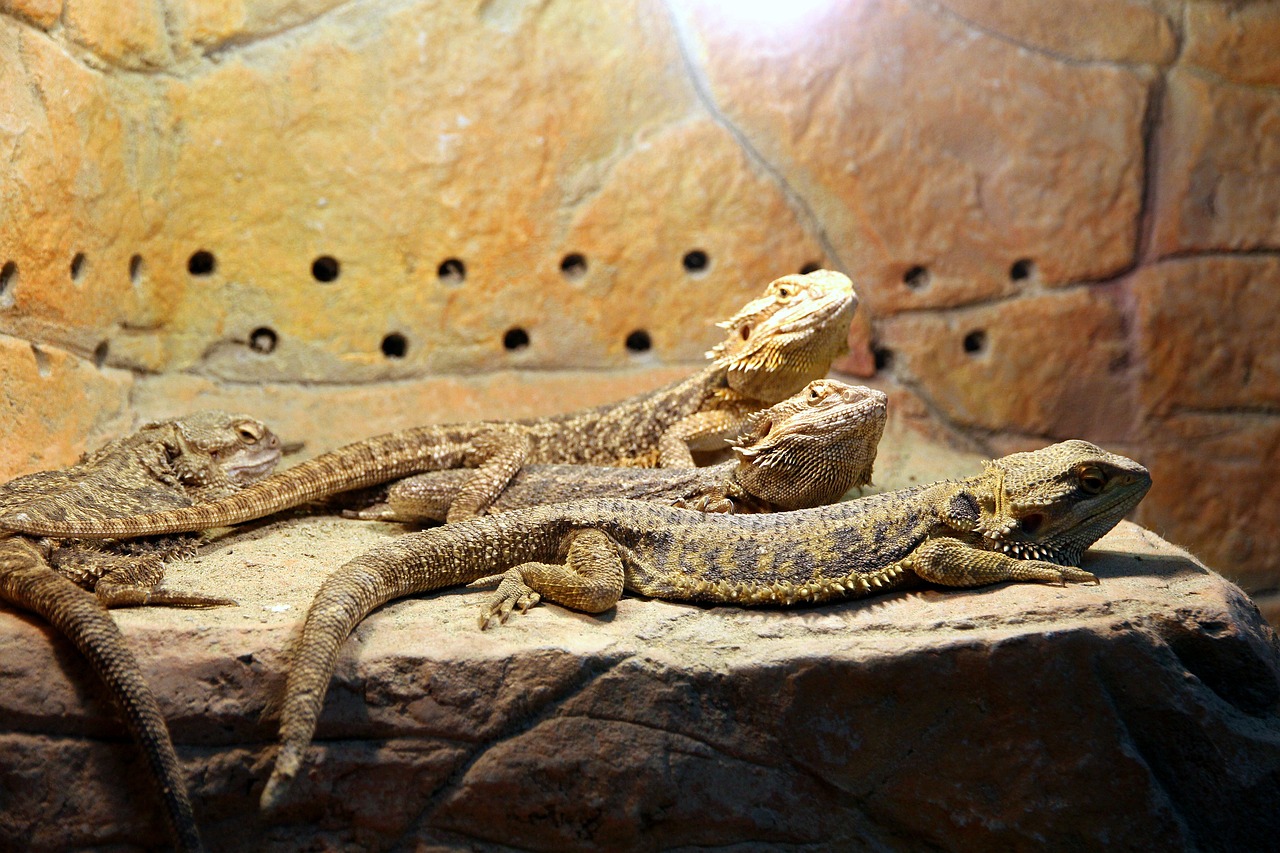Understanding Bearded Dragon Behavior: What Your Pet is Trying to Tell You

Bearded dragons have unique ways of expressing themselves, and understanding their behavior can help you become a more attentive and compassionate pet owner. Knowing how to interpret common signs of contentment, stress, or even illness allows you to respond appropriately and create a comfortable environment for your dragon. Let’s dive into some common behaviors and what they mean.
1. Head Bobbing: A Sign of Dominance
One of the most iconic bearded dragon behaviors is head bobbing. You’ll notice quick, repetitive bobs from your dragon’s head, which can mean a few different things:
- Establishing Dominance: Especially common in males, head bobbing is often a display of dominance over other dragons or even their reflection.
- Mating Behavior: Male dragons bob their heads to impress females during mating seasons.
- Stress: Sometimes, head bobbing can signal stress if your dragon is reacting to unfamiliar surroundings or new tank mates.
If your dragon is alone but still bobbing its head, check for reflections or other changes in their environment that might be triggering this behavior.
2. Arm Waving: A Friendly Greeting or Submission
Arm waving is a gentler movement where the dragon raises one arm and moves it in a circular motion. This behavior usually signals:
- Submission: In the presence of a dominant dragon or even their reflection, dragons wave their arms as a sign of submission.
- Greeting: Arm waving can also be a friendly gesture, almost like a wave to say “hello” to their owner or another dragon.
If your dragon frequently waves, it’s usually not a cause for concern; they’re likely acknowledging their environment or establishing that they’re not a threat.
3. Beard Puffing and Color Changes: Expressing Mood
Bearded dragons are named for their ability to puff out their beards, which often darken or even turn black. Here’s what beard puffing and color changes could indicate:
- Defensive Reaction: Dragons puff their beards to appear larger and more intimidating, often when they feel threatened.
- Discomfort or Aggression: If they feel stressed or agitated, a dark beard can signal a desire to be left alone.
- Male Courtship Display: Males may puff their beards to impress females during mating.
If your dragon’s beard darkens frequently, take a look at their surroundings for potential stressors and monitor them for signs of illness.
4. Glass Surfing: A Sign of Boredom or Anxiety
If you see your dragon pressing its belly against the glass and appearing to “surf” up and down, they may be feeling anxious or bored.
- Environmental Stress: Glass surfing often happens when a dragon feels confined or is reacting to reflections or other pets nearby.
- Boredom: Dragons need mental stimulation, so this behavior could signal that they want more enrichment in their enclosure.
Consider rearranging tank decor, adding climbing structures, or introducing new toys to give them something to explore and reduce boredom.
5. Tail Twitching: Possible Sign of Stress or Excitement
A twitching tail can mean different things based on the context:
- Hunting Mode: When dragons are about to catch prey, they sometimes twitch their tail in excitement.
- Stress: If there’s no prey around, a twitching tail may indicate stress or overstimulation. Monitor your dragon closely to see if anything in their environment could be causing discomfort.
6. Digging: Preparing for Rest or Laying Eggs
Digging is a natural behavior that bearded dragons exhibit for various reasons:
- Comfort: Sometimes, dragons dig to create a comfortable spot for rest, particularly in cooler parts of the enclosure.
- Brumation: Before entering a state of brumation (a hibernation-like period), dragons might dig to prepare a secure place.
- Laying Eggs: If you have a female dragon, digging can be a sign that she’s ready to lay eggs. Make sure to provide a laying box if she’s exhibiting persistent digging.
7. Eye Closing: A Signal of Contentment or Mild Discomfort
You may notice your bearded dragon closing its eyes during interactions or basking:
- Contentment: Some dragons close their eyes when they feel relaxed and safe, especially while being gently petted.
- Irritation: If your dragon closes its eyes in reaction to something specific (like a bright light), it could signal mild discomfort. Check the lighting setup to ensure it’s not too harsh.
Final Thoughts: Observing and Responding to Your Dragon’s Needs
Learning to understand your dragon’s behavior is a rewarding aspect of pet ownership. By interpreting their body language, you can create a more enriching and comfortable environment that meets their needs. Keep an eye out for significant changes in behavior, as these can sometimes be indicators of health issues.
With a little observation and patience, you’ll develop a strong bond with your bearded dragon, responding to their signals and creating a safe, supportive habitat.
Have questions or want to share your dragon’s unique quirks? Drop a comment below—we’d love to hear about your experiences!
